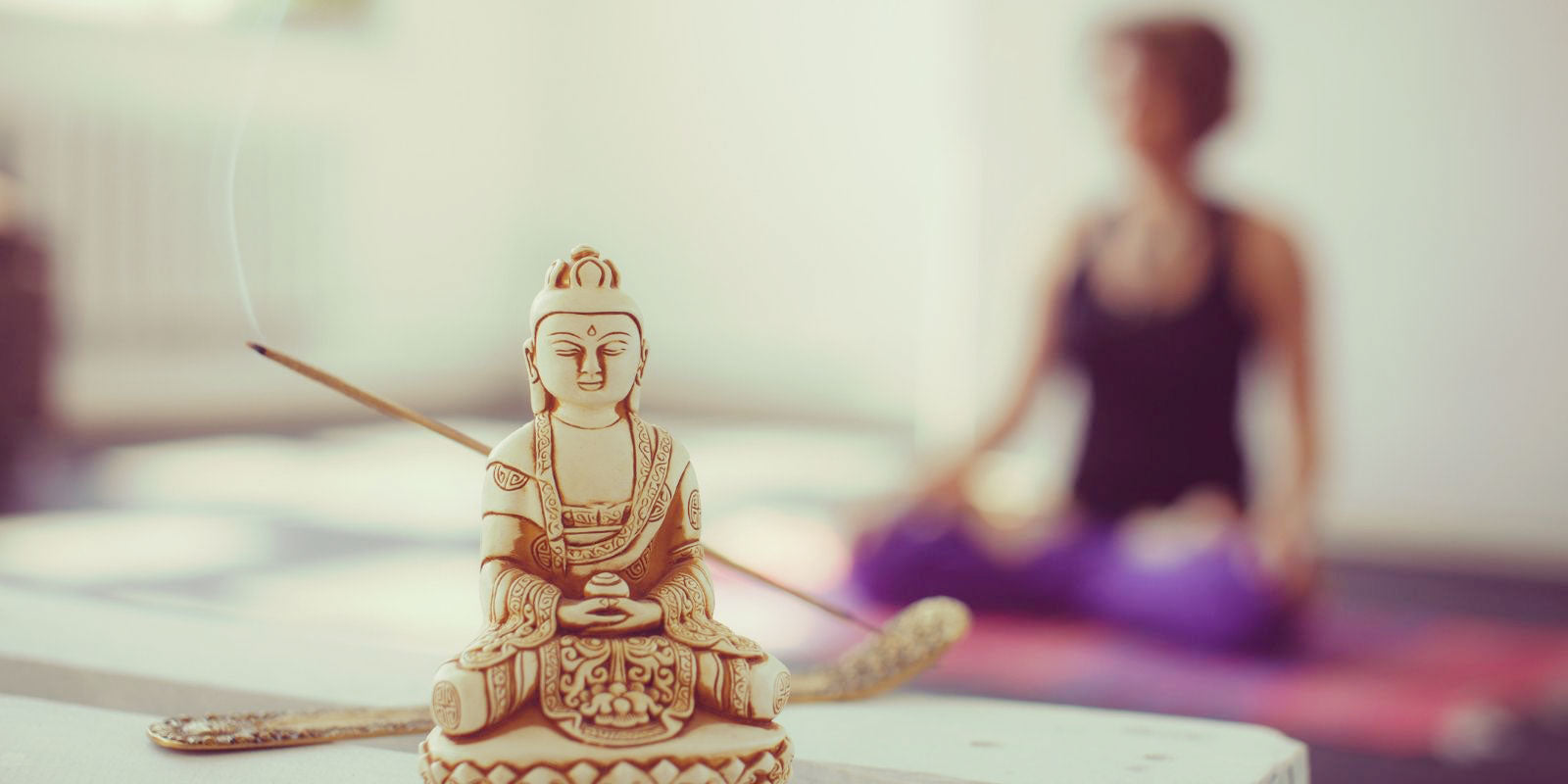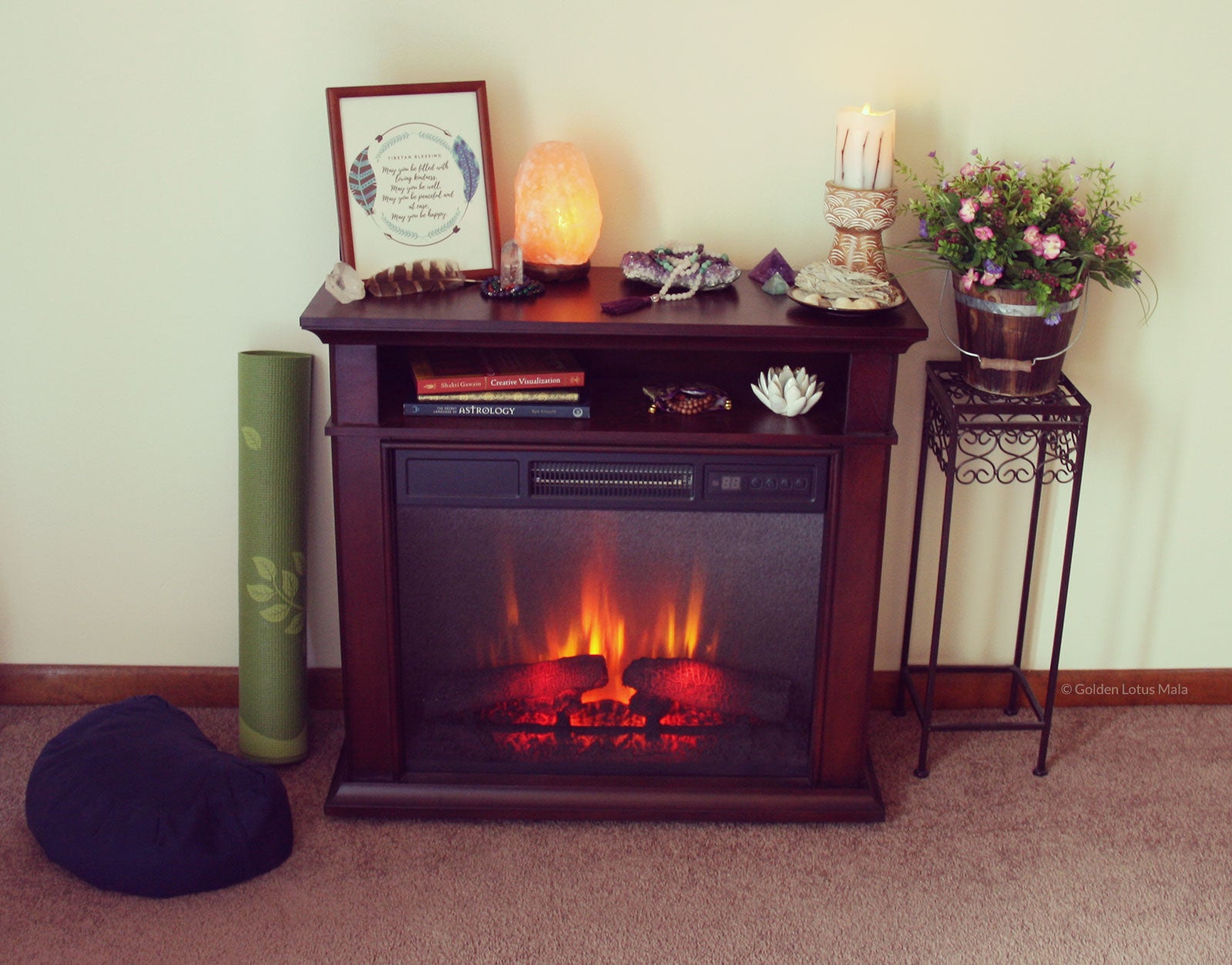
9 Easy Steps To Create Meditation Space At Home
5 min read
Picture a room or area of your home where you can peacefully and comfortably sit, quietly healing and nurturing your mind, body, and soul. One special place that is uniquely yours to attain a tranquil, higher state of being. This area is where you are free from stress, demands, burdens and all the negatives in life that drain you of all your energy. Here, you regain your power, strength, and resolve.
This is exactly what a meditation room will give you and creating this special space is just 9 steps from reality. Here's how to make it happen.
Step 1: Select Your Meditation Space
If you don't have the luxury of a spare room you can turn into an exclusive place of meditation, clear out a corner of one you use for something else. While it's best to have as few distractions as possible, you can easily meditate in the living room or bedroom, provided your time and space are respected by other occupants of the home.
If you're fortunate enough to have a room you can devote only to meditating, take full advantage. Let others know the room is going to be dedicated to peaceful practice. No matter what your options for the meditation space are, you've got some work to do to make it the peaceful haven you desire.
Step 2: Clear It Out
Begin by removing everything in the area that is to become your meditation space. You don't want anything that could be distracting on the walls and there should be no other objects or furniture in the area where you will practice. If you're creating a meditation space in part of an existing room, consider privacy screens to cordon off your little corner of the world. Remove anything else standing between you and inner peace.
Step 3: Mute It
From floor to ceiling, mute anything that could be obtrusive, wash away odors and peel away any memories the room holds - positive or negative. Remove anything from the area that disturbs the still, peaceful time you need to practice your meditation. Even if it's a part of another room, this space should be used for meditating, yoga and attaining the peace of mind you seek.

Step 4: Color It
Color has a strong influence over mood; thus, if you're going to add paint to the walls, choose a color that blends with your environment, not something that will overpower it. Your goal is to achieve a color that coordinates with the atmosphere you desire. If you're seeking a peaceful space consider medium blues, light browns, pale yellows or other neutral, soft-spoken influences will serve you well.
Step 5: Light It
Optimally, you want soft light to filter into the room. Therefore, it's best to cover windows with sheer, unobtrusive curtains. Fabric that permits light to enter without magnifying it too brightly or distracting from the fluidity of the rest of the room.
If you meditation room does not have windows, you want to add fixtures that enable you to control the lighting, going from bright and well-light when needed, to soft, dim background auras when meditating. Candlelight can add a peaceful ambiance, battery-operated candles are really great for lighting a small area.
Step 6: Invite Elements Of Nature
If possible you want to add fresh air to your deep breathing. Fresh air can boost your mood, health, and mental capacity. If there aren't any windows to open, scatter large, simple green potted plants or small trees around the room. Out of the way, but nonetheless invoking of a more natural and clean environment.

Step 7: Add Scent
Aromatic essential oils, incense, and candles can all contribute to an enlightened state of meditation, but make sure the scents do not overwhelm. They should add to, rather than distract from, the entire experience.
Consider soft jasmine or light lilac and try to coordinate your scents with the colors you're surrounded by for a simple, but enveloping effect. Light your source of scent a few minutes before you enter the meditation area, then put them out when you begin. You'll find the fragrance lingers without distracting you in any way.
Step 8: Add Music
Music can be an essential aspect of the meditative experience unless you happen to live out in the country where the only sounds entering the room are a running brook and singing birds. Such sounds would only serve to compliment your meditation, whereas traffic, sirens, and other intrusive elements should be subdued by the soft, instrumental music you provide in your background.
Step 9: Make Yourself Comfortable
While it's not recommended that you sit directly on the floor, your choice of seating is completely up to your individual comfort. Yoga mats could do the trick, or you might prefer a meditation cushion, or a set of large, soft pillows. Whatever you choose, remember to make it comfortable and inviting, to keep with the desired mood.

My Meditation Space
This tiny meditation space (pictured above) was carved out of a corner of my office. I chose a portable fireplace as my meditation altar because it serves multiple purposes. On the shelf, I can store books, mala beads, and incense, it has a relaxing pretty ambiance, and in the winter months, it heats my meditation area nicely.
On top the altar you'll find white sage, an amethyst geode with one of my mala necklace's placed on it, a few crystals and bracelets, a salt lamp, candle, and some artwork.
To the left side of the altar are my meditation cushion and yoga mat, to the right side a simple plant that I like to change out depending on whatever season it is, currently it's Summer and flowers in bloom. It's a simple space for relaxation and complements the rest of the room.
What You Can Expect To Accomplish In Your Meditation Space
Aside from perhaps saving your soul from the stresses of a demanding career and busy home life, your personal place of meditation will have strong, measurable effects on your being. The following are some of the practical benefits of meditating regularly:
-
Improved cardiovascular health through a slowed heart rate and breathing, which may lower blood pressure.
-
Management of chronic illness through consistent stress management.
-
Strengthened immune system via improved circulation, elimination of harmful free-radicals and more relaxation.
-
An increased ability to mitigate pain, such as that from arthritis, fibromyalgia, and migraines.
-
Elevated self-confidence and esteem, along with a more positive perspective.
-
Resolution of anxiety, phobia and other potentially debilitating conditions.
-
Increased creativity and ability to untangle problems.
-
A stronger ability to recall and focus.
-
Elevated spirituality and connections to the inner self.
-
Acceptance of the past, leading to a more fulfilling present and potentially promising future.
Don't just picture such a place in your home, make it a reality. Having your own individual space devoted to meditation, be it an entire room or small corner of one is an amazing opportunity for personal growth, healing and truly coming together as a whole individual.
About The Author
Heather is an Artisan Jeweler and Certified Meditation Teacher. In 2011 she established Golden Lotus Mala to create jewelry with a purpose for meditation and spiritual growth. Within this blog she shares her experiences about meditation with mala beads, natural gemstones, crystals, and more.
Subscribe
Sign up to get the latest on sales, new releases and more …


















